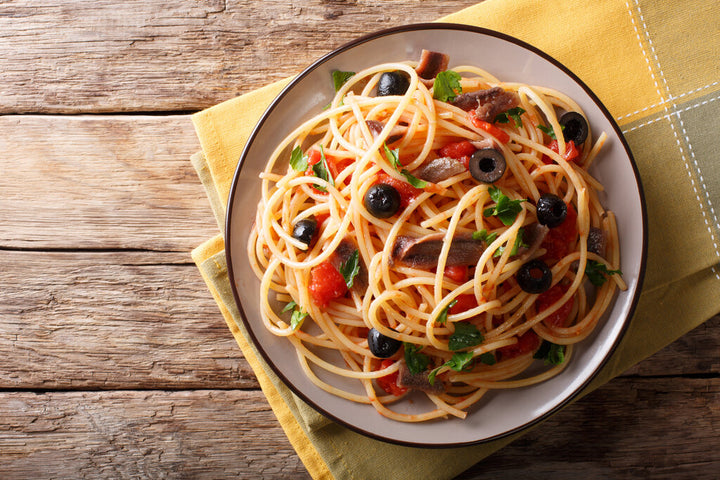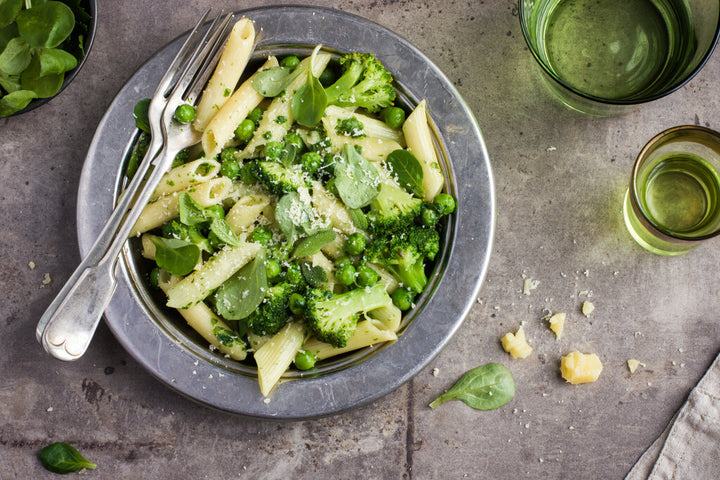Slow-cooked, Moroccon-style fish tagine is an aromatic feast that’s as fragrant as it is delicious. This is one recipe that takes a large number of spices and a little patience to get just right, but it’s well worth the effort when you’re ready to serve up fresh fish tagine with fluffy couscous!
This fish tagine is best cooked in a Moroccan tagine pot, where you can circulate the aromas and spices to release the complex flavors of this Moroccan fish stew. Our fish tagine recipes are made using the popular and authentic Maqualli style of cooking, which makes use of a thick marinade heavily flavored with onions.
First, you’ll use a chermoula sauce, Moroccan cuisine favorite, which will infuse the fish with flavor. Then we’ll prepare the fish tagine itself, letting it simmer for at least one and a half hours.
We know you’re going to love this one, so keep reading to find out how to make tagine with our Moroccan fish recipe!
Moroccan fish tagine recipe FAQ
Moroccan fish tagine is a slow-cooked labor of love that’s perfect for sharing with friends alongside a hearty bowl of buttery couscous.
It’s a delicious recipe, but it’s one that takes a little practice to get right. Read through the tips and the answers in our FAQ section, however, and you’ll be a tagine cooking master in no time at all!
What is the Moroccan Maqualli cooking style?
Moroccan cuisine has a number of unique culinary styles, many of which make use of a traditional clay tagine pot for the best, slow-cooked results.
One of these styles is known as Maquilla, which is the style we’ve been using for our fish tagine. Maquilla cooking slowly cooks the ingredients by sauteing them, a process which happens in the bottom of the oil-lined tagine pot. The technique requires lots of onion, oil, and spices such as turmeric, ginger, and saffron, which give us a thick, fragrant base.
What is chermoula marinade?
As well as using the unique Maquilla cooking-style in the tagine pot, our recipe also gives the fish and the vegetables flavor through a liberal application of chermoula marinade. This is a common mix of spices and herbs, which you find in many North African dishes.
You can find chermoula marinade in specialty shops, or you can prepare one yourself at home. For a basic homemade chermoula, you’ll need the following ingredients:
- Freshly-chopped cilantro
- 4 minced cloves of garlic
- 2 tbsp of paprika
- 1 tbsp of cumin powder
- Salt and pepper to taste
On top of this, you can add in fresh ginger, cayenne pepper powder (for a bit of a kick), saffron, and freshly-squeezed lemon juice. Mix all the ingredients together, then pour in a few tablespoons of olive oil to create the sauce.
What type of fish is best for seafood tagine?
There are lots of different types of fish and seafood that you can consider for your fish tagine. It’s really up to you, but make sure the fish is thick and almost meaty and steak-like. This gives the tagine a great texture and also ensures there aren’t many bones in the broth!
Good options include tilapia, for a delicious Moroccan tilapia recipe, or swordfish or sea bass. You could try a salmon tagine, or you could experiment with other types of seafood such as shrimp or octopus.
Whichever seafood you go for, we guarantee our Mediterranean fish recipes with olives are going to be delicious!
What can I serve with fish tagine?
Fish tagine is best served with a side of couscous for a classic Moroccan accompaniment to the meal. You can add a little butter to the couscous or flavor it with raisins or almonds.
You could also prepare a leafy green salad, serve bulgur wheat, or heat up a few flatbreads to mop up the tagine sauce at the end of dinner.
How can I store fish tagine leftovers?
If you have any leftovers, then you are best off freezing in small portions to keep the fish from going off.
Transfer the leftovers to freezer-friendly containers or resealable zip lock bags, and you can keep the fish tagine frozen for up to 6 months. Let the leftovers defrost overnight before reheating on the stovetop.
How to use a tagine for the first time?
If you’ve never used a tagine before, then don’t worry, because they are simple yet effective pieces of kitchenware!
Modern tagine pots are often enameled, which makes the cooking process non-stick and the cleaning process much easier.
You can clean your tagine pot using soap and warm water to get rid of any burnt food or stains that might appear. It’s good to do this right away, otherwise the fish can leave strong smells and tastes behind.
Fish tagine: an aromatic masterpiece of Moroccan cuisine
That’s the end of our fish tagine recipe, a Moroccan masterpiece that’s fresh, aromatic, fragrant, and flavorful. It’s a slow-cooked delight that takes time to prepare, but you’ll savor every last mouthwatering mouthful of your fish tagine once it’s been cooked to perfection!
Why not bookmark our Moroccan tagine, preserved lemon, and seafood specialty for your next North African inspired dinner?
Leave a comment
Comments will be approved before showing up.
Also in Recipes










